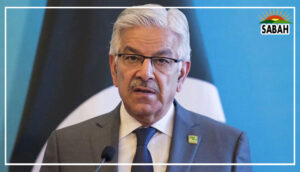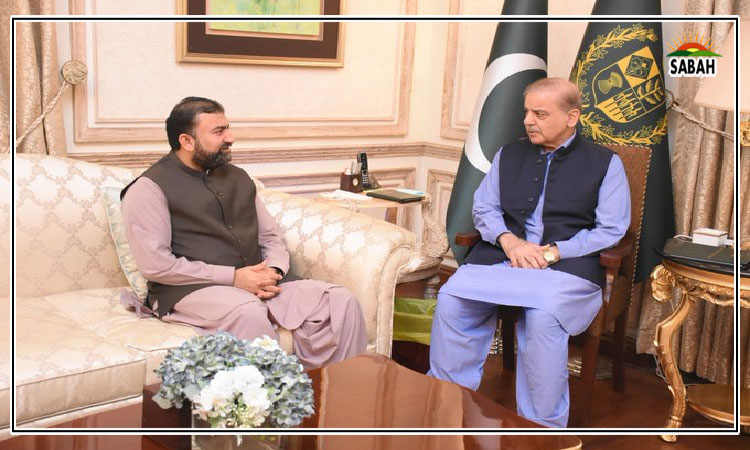Austerity: truly misunderstood…Dr Khaqan Hassan Najeeb
Certain policy areas are less well understood. Austerity is one of them. Austerity comes from the Latin word austerus, meaning harshness. Austerity has grown from a policy of rationing and constricted consumption, to one that refers to a set of policies that work towards reduction of government deficits and stabilization of government debt. The two objectives are achieved by way of expenditure rationalization or revenue increases, or both.
Many have come to believe as if a choice has to be made between austerity and growth. This view may be good for use as rhetoric by political leaders but it does not define the real choices the ones that need to be made by a prudent policymaker. Those who argue that austerity and growth are conflicting objectives, are working from a frame of mind that instigating growth in an economy can mainly be done through helicopter monies. But we know better easing credit and fiscal largesse at best produce short-lived success and hardly a sustainable growth framework.
It is outrageous for any economy to borrow to fund fiscal largesse. Such an economy will be challenged with debt and fiscal sustainability sooner or later. There is nothing worse than reaching a stage where survival depends on foreign financial inflows with markets losing confidence in the sustainability of a countrys debt profile. Pakistan is at that very critical juncture.
Countries exhibiting fiscal and financial imprudence tend to have low levels of non-debt creating flows such as domestic and especially foreign direct investment. Pakistan has to come out of the entrenched pattern of borrowing to push growth. This policy keeps the country in cycles of bust and boom seen for the last seven decades and will not result in sustained growth. There is unquestionably a link between sound fiscal and financial policies, and growth.
A host of factors including economic conditions, global environment and the citizens who are impacted by austerity reforms, have to be kept in mind while framing policy measures. It is obvious: there are no quick austerity fixes for Pakistans economy. Pakistan needs a herculean effort on repairing the expenditure side as well as upping its game on federal and provincial level taxation.
Several of the modern economies including the UK, France, Italy, Netherlands, Sweden, and New Zealand have undertaken spending reviews during the last few years. A good place to initiate an austerity framework is to undertake an expenditure review in the country, scrutinizing spending on public programs and evaluating their merits. The Public Sector Development Program in Pakistan needs a rethink with the federal government focusing only on areas strictly under its domain. Trillions of rupees in throw-forward means project rationalization has become imperative. The country needs to move to an approach of spending on projects with higher social, economic and financial returns. Another area of concern is to move to a model of timely completion of projects.
The growth in current expenditure in our federal budget is unsustainable. It is astonishing to note that pensions in the federal budget have ballooned to Rs500 billion in FY23 the burden more than doubling in the last five years. Equally worrisome is the estimated increase in markup payable to nearly Rs5 trillion in FY23 more than tripling in five years. Pension reforms and debt reprofiling, both domestic and external, have now become critical. Several committees have deliberated on pension reforms but to no avail. National debt reprofiling work is still a distant dream. Such weak resolve cannot be the future of reform in Pakistan.
Monetization of the perks and privileges of the civil and military bureaucracy can help reduce pilferages. Targeted subsidies restricted to the mechanism of income support programme in the country can ensure the well-off pay for the cost of services. The overarching reform area is of course a new NFC award requiring consensus of all political parties. An equally important area is implementation of the 18th Amendment; this requires devolution of functions especially in the social sector. This is all significant austerity work for stabilizing fiscal operations at the federal level.
Government-funded sectors the state-owned enterprises (SOEs) especially in energy, aviation and transport sectors simply need to go for divestment. This is our only hope of curtailing the quasi fiscal haemorrhaging of hundreds of billions of rupees yearly. Out of grave concern I spearheaded four key publications while at the Ministry of Finance to highlight the plight of SOEs and suggest a way forward. It is unfortunate that despite our effort to create awareness of the heavy bleeding we have still not been able to muster the will or the wherewithal to move forward on divestment.
Fraudulent activities, tax evasion and tax avoidance need to be detected and relevant actions taken to collect the tax amount due at the earliest. The huge tax gap estimated at nearly 50 per cent needs to be minimized. Tax expenditures of Rs1482 billion, more commonly understood as tax concessions, need to be reduced.
Pakistan needs to devise an appropriate capital gains tax on both movable and immovable assets and an inter-generational wealth transfer tax mechanism. We need to correct our worst failing of willfully keeping the retail and agriculture sectors out of the direct tax net. It is time the principle of bringing all incomes under one head and taxed at marginal rates should guide our tax effort. The perennially low tax-to-GDP ratio at the federal level, hovering around 10 per cent for decades, can be repaired through the above policies.
Provincial tax collection remains uncomfortably low at around one per cent of GDP. Urban property tax, GST on services, motor vehicle tax and agriculture income tax have high potential which is not being tapped. Our tax-to-GDP ratio is one of the lowest compared to similar income category countries. Through our analysis it is quite clear that the revenue side of austerity policy for Pakistan has immense potential. It is of concern that high fiscal deficits have resulted in Pakistans public debt to GDP soaring over the last several years. This highlights the need for a thorough review of Pakistans public financial management and for mandating limits on budget deficits.
The idea behind writing this piece is twofold. One is to bring clarity in our thinking that there is no choice to be made between austerity and growth and two, to suggest a worthwhile and meaningful austerity framework for Pakistan. We have to think beyond small steps which have a meagre impact on cutting operating expenditures I am sure we can be wiser than this.
The kind of policy action required today can be judged from advice at the global level. Joseph Stiglitz, a Nobel prize-winning Keynesian economist, advocates for the super-rich to be taxed as high as 70 per cent along with imposition of 2-3 per cent wealth tax on fortunes. Pakistan has a long and challenging road ahead. We need to do serious introspection. The above is a menu for serious change. Serious change requires seriously competent people. Quite frankly, given the weak level of professionalism and governance structures, and an outsourced model of policy-framing, hope for impactful policies to materialize is rather weak.
Courtesy The News












